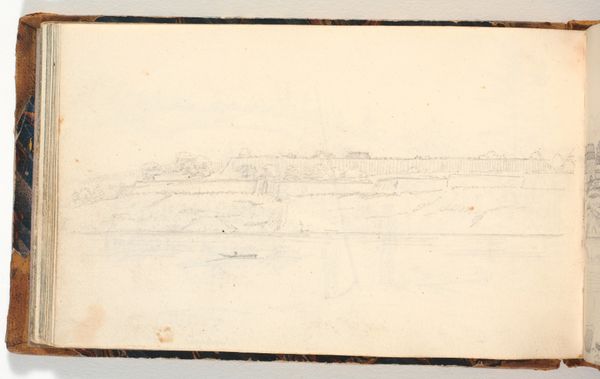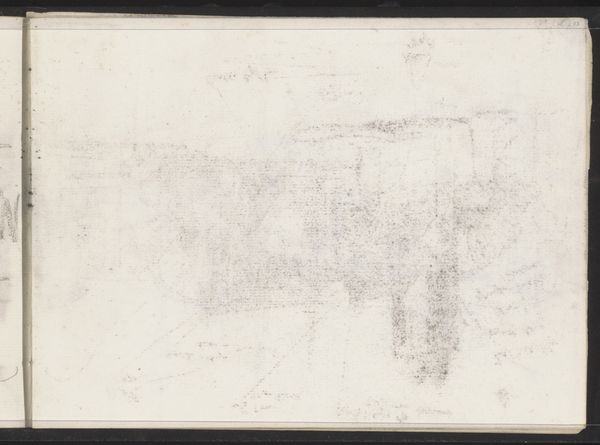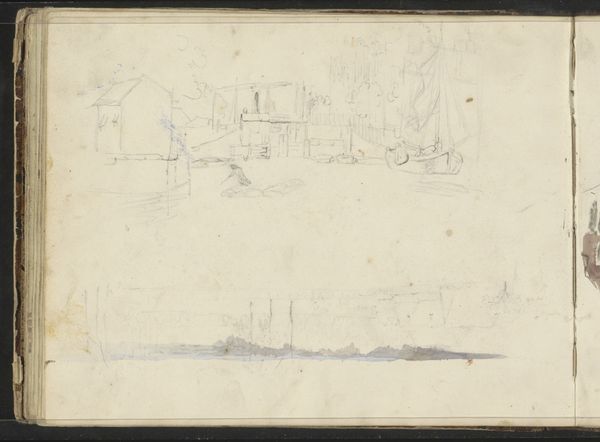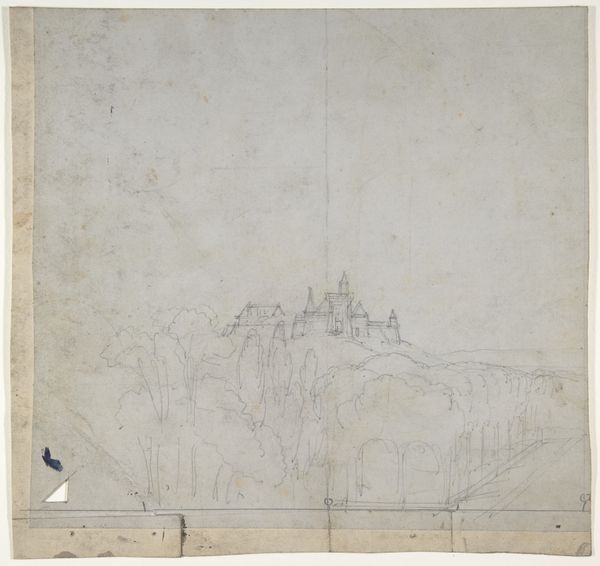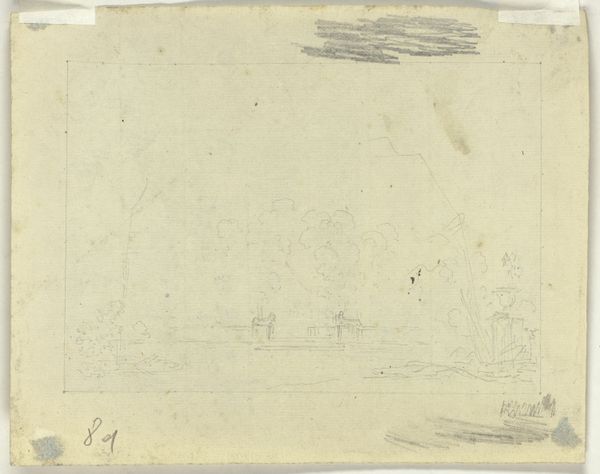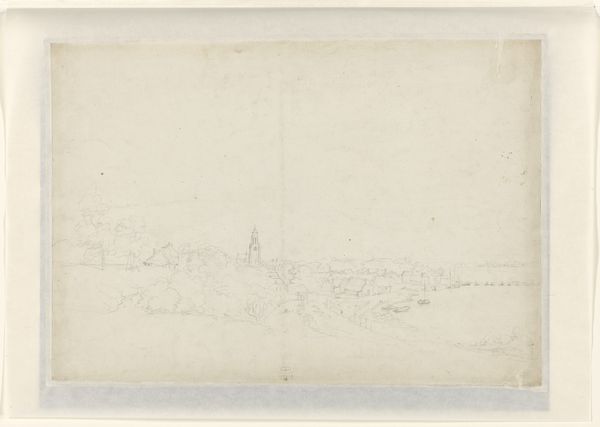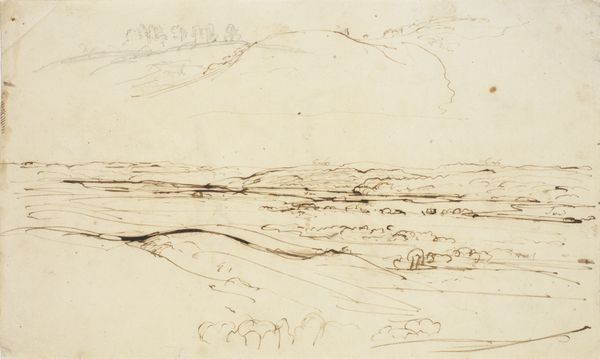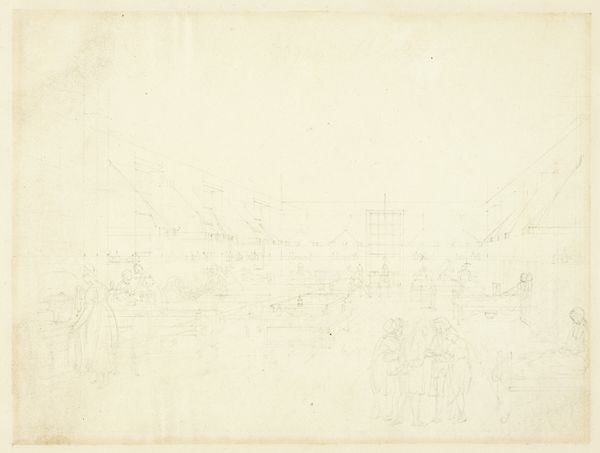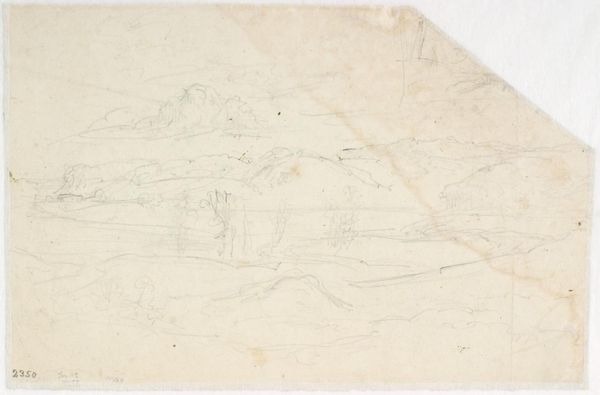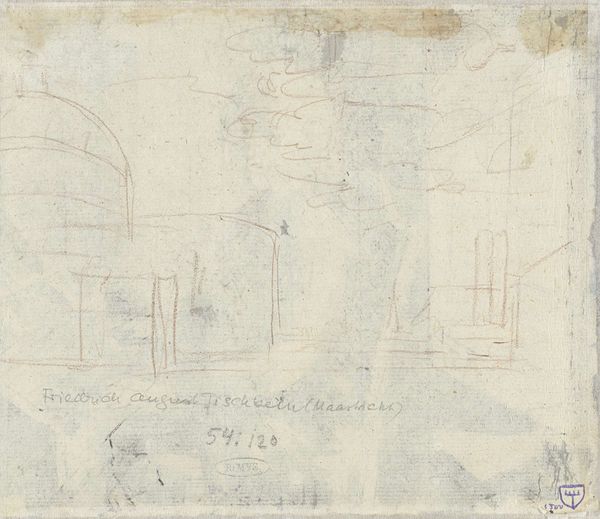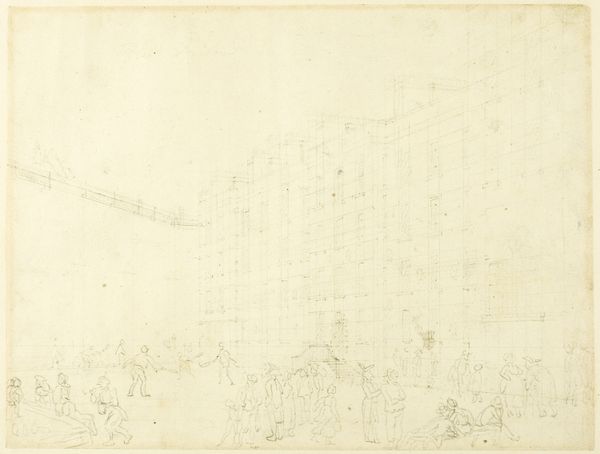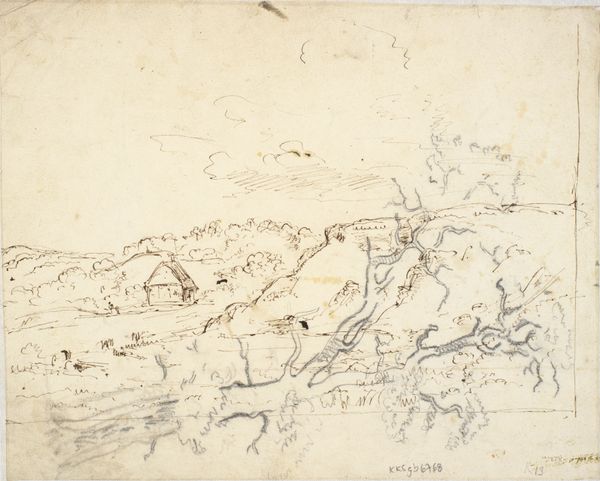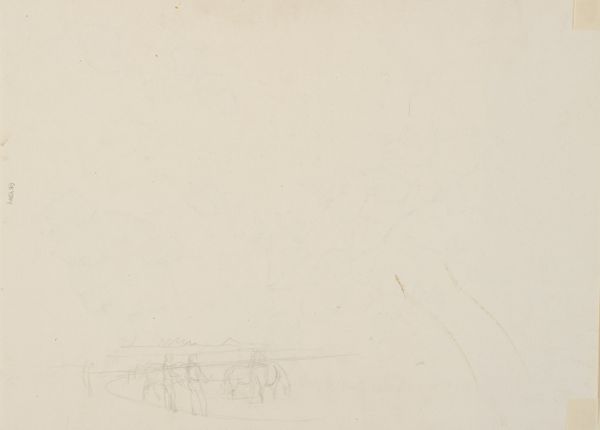
drawing, pencil
#
drawing
#
boat
#
neoclassicism
#
landscape
#
figuration
#
form
#
underpainting
#
romanticism
#
pencil
#
line
#
cityscape
Copyright: Public Domain
Camille Corot sketched this View of Vesuvius with graphite on paper. In this image, Vesuvius looms, a silhouette against the sky, embodying nature's formidable power. The volcano itself is a potent symbol, linked to destruction and renewal. Vesuvius evokes the catastrophic eruption that buried Pompeii, freezing a moment in time, a testament to the transient nature of human endeavors. This motif of the destructive sublime surfaces repeatedly in art history, from Romantic paintings of shipwrecks to contemporary images of environmental disasters. The volcano is not merely a natural phenomenon, but a cultural icon loaded with layers of meaning. It represents the unpredictable forces that shape our world and the human struggle to find meaning in the face of such forces. The image of Vesuvius engages our collective memory and the deep-seated human fascination with catastrophic events, inviting us to contemplate the cyclical nature of destruction and rebirth.
Comments
stadelmuseum about 2 years ago
⋮
Camille Corot drew this view of an overgrown rock formation near Civita Castellana on the occasion of his first stay in Italy. During his time in Rome, between 1825 and 1828, the artist showed little interest in the great art of the museums and churches, but focused his attention almost exclusively on the landscape. He was drawn out into the countryside around Rome, the Roman Campagna: to the south, to the Alban Hills, Lake Nemi and Arricia; to the east to Subiaco and Olevano; and especially to the north, to the unspoilt region of the Sabine mountains and again, in the spring of 1826 and the autumn of 1827, to the rocky plateau of the small medieval town of Civita Castellana.During these excursions to the various regions, mostly in the company of like-minded friends such as François-Edouard Bertin and the German Ernst Fries, Corot's aim was not to capture a picturesque location with topographical accuracy simply to be able to transfer it to a painting. Instead, Corot the painter made the countryside of Italy his own through numerous studies executed with an analytical eye and sensuous perception.In this 'Landscape Study near Civita Castellana', created in pencil and pen and ink, Corot has shaped his view of the selected natural detail thoughtfully but also with an experimental approach. His attention is focused on the forms and values of the unique symbiosis of a rugged rocky massif with luxuriant vegetation. While drawing the sweet chestnut trees, his keen sense enables him to characterise the dense, wild growth, which resembles an organic structure. By concentrating on the typical structure and the volume of the trees, the artist depicts its natural unity as a lively rhythmical and spatial formation. He uses curving lines to describe the arching forms of the treetops against the light, and hatching of different densities to indicate the shadowy depths of the gaps in between.As a motif study, this drawing stands in evident contrast to the panorama with Mount Vesuvius which the artist sketched on the back of the sheet in Naples in the spring of 1828. In its vivid and yet subjective quality, it makes clear why the early Corot's "modern" approach to landscape had such a profound effect on artists of the following generation, especially Paul Cézanne.
Join the conversation
Join millions of artists and users on Artera today and experience the ultimate creative platform.
